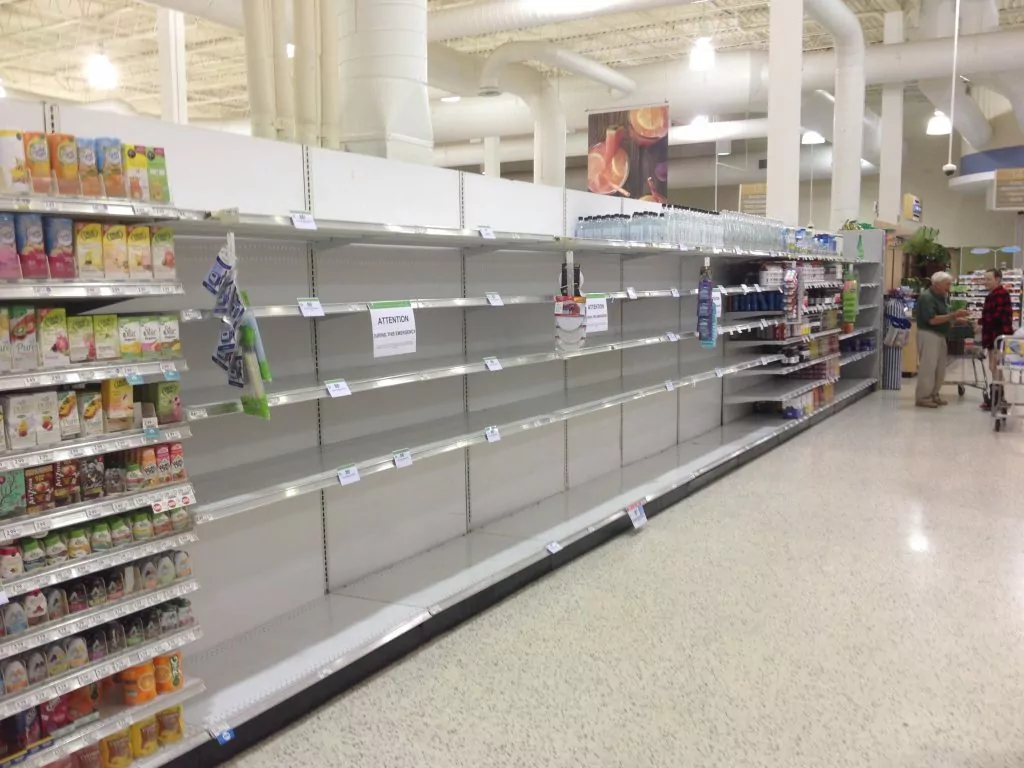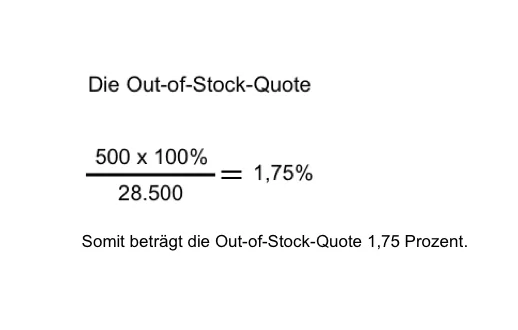Out-of-stock typically refers to a shelf space in the stationary retail trade which no longer contains the intended article.
The delimitation to the concept of shortage is that out-of-stocks (OOS) is exclusively the direct relationship between the retailer and the end customer (consumer), i.e. the latter is the one who encounters the ‘shelf gap’. While the original OOS definition describes the situation where a shelf label declares the product but the corresponding shelf space is empty, more modern definitions are broader: On the one hand, OOS now refers not only to the stationary trade, but also to the e-commerce, but on the other hand with a greater focus on the consumer perspective.
Definition of Out-of-Stock: A product not found in the desired form, flavour, or size, not found in saleable condition, or not shelved in the expected location – from the perspective of the consumer.
Roland Berger Strategy Consultants (2003),“Optimal Shelf Availability: Increasing Shopper Satisfaction at the Moment of Truth,” ECR Europe.
Measuring Out-of-Stock
Out-of-stocks can be measured by different methods:
- Manual measurement
- By using POS (Point of Sale) data
During the very personnel-intensive manual measurement, the shelves are systematically checked for gaps on site. In contrast, mathematical-statistical methods based on sales patterns are used to forecast OOS by using concrete data from the point of sale. In this way, sales patterns of an article can be derived on the basis of turnover frequency and volatility (fluctuations in certain time intervals/time series).
If a gap in the shelf is (statistically) identified in this way, the decision-maker is informed and the staff on site checks whether a corresponding OOS is available or not. The mathematical-statistical measurement procedures can again be divided into two methods: level analysis and frequency analysis.
- In level analysis, an OOS can be determined with a high degree of probability by setting lower limits for the daily sales of an article; if this limit is undercut, there is most likely a gap in the shelf.
- Instead, the frequency analysis focuses on a fixed interval limit, which determines the time interval between sales of a certain article; if this interval exceeds the limit (the time interval becomes longer), then this is just as likely to be due to a gap in the shelf.
Note: In order to implement mathematical-statistical methods, it is important to have a good database; especially with regard to historical data, aggregation standards and quality. With such methods, however, only articles with a relatively high constant turnover rate and low volatility can be predicted more or less accurately.
The out-of-stock quota
The out-of-stock rate expresses as a percentage the share of unavailable items in the total number of items carried (or in demand). For clarification, a straightforward example from e-commerce: A webshop operator cannot deliver 500 of the 28,500 items ordered in one month within the promised two working days after the order.
In addition to the determination of the OOS quota alone, it makes sense to segment OOS situations according to their occurrence, for example by days, time, action periods, as well as by manufacturer and product groups.
Jon Meyer, University of Bremen
This key figure (quota key figure) indicates the quality of logistics/ merchandize management and sales planning. In addition, it provides information on the loss of sales due to unsatisfied demand. In principle, out-of-stock situations are to be assessed negatively from a business management point of view, as they reduce sales, make sales planning more difficult and cause unnecessarily high logistics costs (see also warehousing costs).
Causes of OOS
One of the most common causes of unplanned gaps in shelves:
- Ordering issues
- Shortcomings in the loading of the shelf space
- Delivery and placement problems
- Listing differences*
All in all, it can be said that in almost three-quarters of all cases, the causes of OOS lie in the practices and processes of the subsidiaries. Only in 28 percent of the cases can the supply chain be identified as the source of the problem. […] The results of our study suggest that future improvement measures should also focus on the last 50 meters of the supply chain.
Customers’ reactions to OOS
There are several ways in which customers may react to a gap in the shelf:
- Aborted purchases (lost turnover for manufacturers and dealers)
- Deferment of purchase
- Choice of different retailer (loss of turnover at the expense of the retailer)
- Choice of a different brand (loss of sales at the expense of the manufacturer)
- Choice of a different variant
As a result, OOS can lead to a loss of sales for both the retailer and the manufacturer or even to buyer migration by not buying, by buying elsewhere or by substituting the desired item with a product from another manufacturer. To reduce out-of-stocks, there are numerous measures that can be taken at various points and eliminate the corresponding causes. For example, the automation of OOS recognition and dispatching represent a holistic solution approach to reduce the OOS quota.
Summary Out-of-Stock
Out-of-stock describes the non-availability of products expected or already marked from the customer’s point of view at the so-called point of sale. Thanks to digitalisation, the latter also includes online trade – wherever the end customer expects his goods but cannot find them. These are therefore the missing quantities of a product that is not available or not in the expected condition at a shelf space designated for it with a label. As a characteristic of listing differences, this also includes the de facto non-listing of a mandatory article agreed between the manufacturer and the trade centre. Disadvantages of such a situation: When goods are unavailable, the customer often changes stores or chooses a different brand. For this reason, out-of-stocks are reduced, for example, through optimal shelf availability (OSA). Still, a complete elimination makes no economic sense since according to a decreasing marginal utility, the gained shelf availability does not bring any further benefit above a certain level.
*List differences is a term commonly used in subsidiary logistics: agreement on the availability of certain articles between the manufacturer and the retail center is not implemented by a store or is implemented with delay. From a logistical point of view, this is not a gap in the shelf, but from the customer’s point of view it is, since these articles are virtually expected and their absence causes similar reaction patterns as a real gap in the shelf.
Article image: Andrew Heneen / CC BY 4.0
If you are interested in the topic of store logistics, then you may also want to read the articles on inventory management and the stock keeping unit.
Also available in Deutsch (German)
 If a gap in the shelf is (statistically) identified in this way, the decision-maker is informed and the staff on site checks whether a corresponding OOS is available or not. The mathematical-statistical measurement procedures can again be divided into two methods: level analysis and frequency analysis.
If a gap in the shelf is (statistically) identified in this way, the decision-maker is informed and the staff on site checks whether a corresponding OOS is available or not. The mathematical-statistical measurement procedures can again be divided into two methods: level analysis and frequency analysis.
